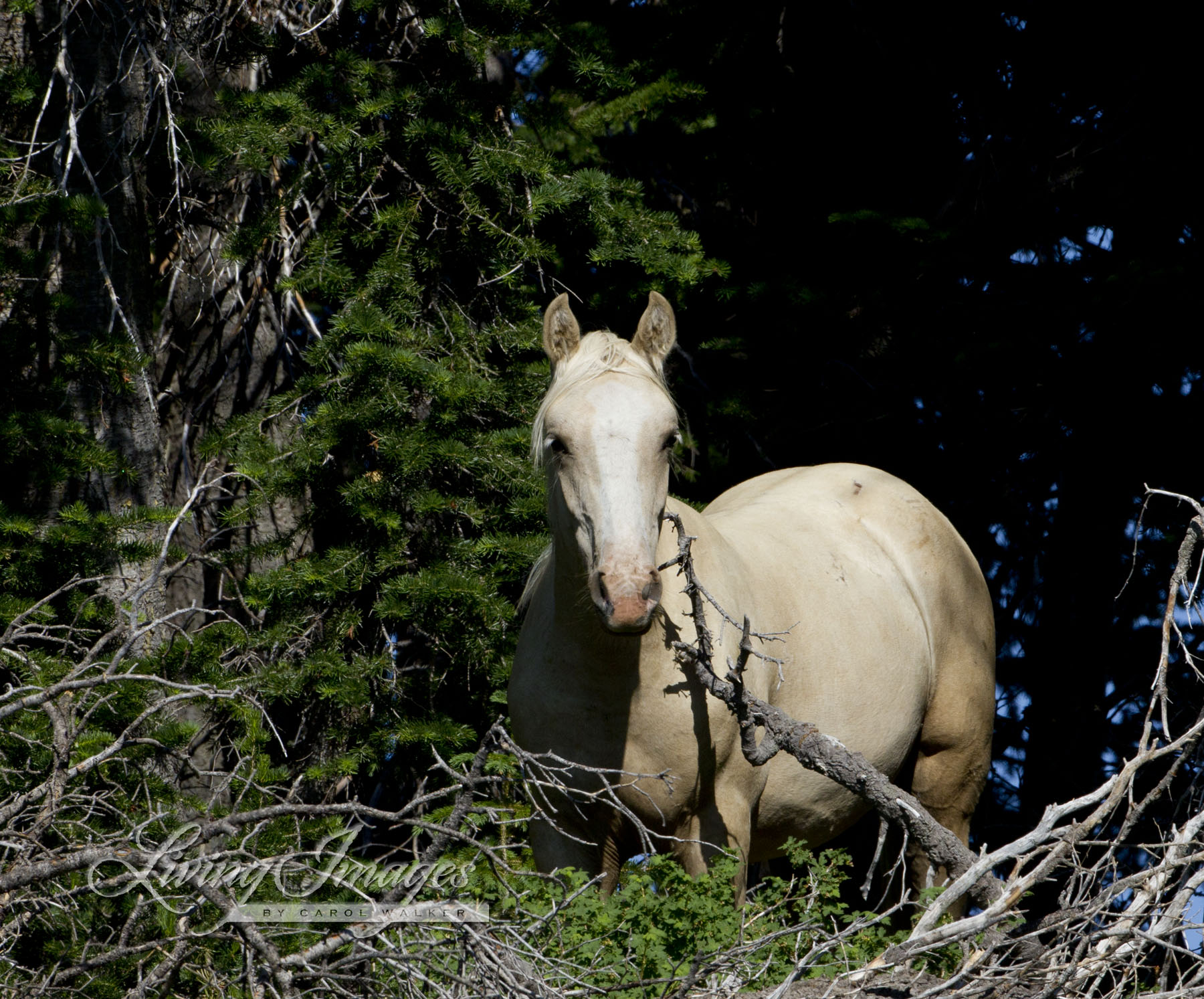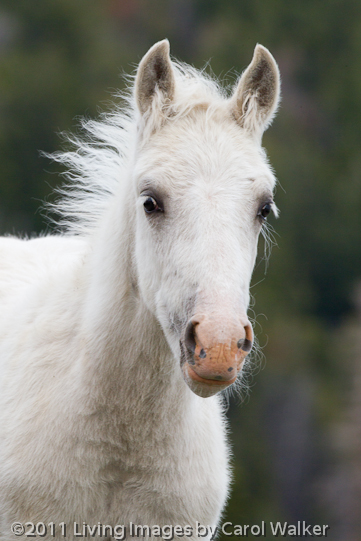This new article in the Wall Street Journal by Stephanie Simon has gotten many people talking about wild horse issues, including the issue of whether or not wild horses are “feral” and deserving to be eradicated from our public lands, or a returned native species. Ross MacPhee, Ph.D. from the American Museum of National History has been kind enough to allow me to reprint his response to Ms. Simon, and it is the best explanation I have heard regarding the wild horse’s evolution.
“Mustang Plan Riles the West”
BY STEPHANIE SIMON
Federal wildlife managers are fighting in court to take the unprecedented step of castrating 200 wild stallions in Nevada, in an effort to control surging populations of wild horses across the West.
Animal-rights activists oppose the plan, which they contend would strip the wild stallions of their fighting spirit and change herd dynamics. A coalition of horse advocates last month filed suit to block the U.S. Bureau of Land Management from castrating the stallions, also known as gelding. In response, the agency agreed to postpone the castration until a federal court in Washington, D.C., can hear arguments later this year.
Wild horses are not native to America; they are descended from domesticated horses brought over by early European explorers. Still, federal law protects mustangs as “living symbols of the historic and pioneer spirit of the West.”
Here is the response:
Dear Ms. Simon,
I am writing to briefly comment on your WSJ article on wild horse castration, but only with regard to a particular scientific issue: the “native” or “endemic” vs. “alien” or “invasive” status of wild horses in North America. Although these terms are used in different ways by different people or interest groups, I’ll stick with an evolutionary definition of a “native” species as being one that differentiated or diverged from its immediate ancestor species within a specific geographical locale.
In my view, the primary considerations are these:
1. It is correct that the standing crop of wild horses in the US is recently derived from lines domesticated in Europe (and Asia).
2. But those lines themselves go much further back in time, and converge on populations that lived in North America during the latter part of the Pleistocene (2.5M to 10k years ago). The evidence for this, until recently, has been primarily morphological, based on comparisons of living vs. fossil horses. The genetic evidence from ancient DNA is still preliminary, but it seems to point to the same conclusion, which is that the species Equus caballus–the species encompassing all domestic horses and their wild progenitors–arose on this continent.
3. The evidence thus favors the view that this species is “native” to North America, given any rational understanding of the term “native”. By contrast, there are no paleontological or genetic grounds for concluding that it is native to any other continent.
4. From a scientific standpoint, it is completely irrelevant that native horses died out in North America 10,000 years ago, or that later populations were domesticated in central Asia 6000 years ago. Such considerations have no bearing on their status as having originated on this continent.
5. It is worth noting that dozens of other species in addition to native horses died out at the close of the Pleistocene, in an episode termed the megafaunal extinctions. The only major difference is that, long before 10,000 bp, E. caballus had established itself on other continents (South America as well as Eurasia) by crossing landbridges. There they survived. Reintroduction to North America 500 years ago is, biologically, a non-event: horses were merely returned to part of their former native range, where they have since prospered because ecologically they never left.
5. Whether these considerations should play a role in policy decisions I leave to others. At the same time, it needs to be more widely understood that the horse’s status as a native North American species is beyond serious question, whatever side of the debate over wild horse control one leans toward.
Sincerely,
Ross MacPhee, PhD
Curator
Division of Vertebrate Zoology
American Museum of Natural History
New York NY 10024



5 Comments
All the more reason to protect our Mustangs!!
What matters it? The BLM says the mustangs MUST go they are ruining the land. They are over populating there fore starving themselves out. And they are not native! How many times does the BLM have to be wrong? First cattle destroy the grass far worse then any horse band. There is NO way THEY over populate like cattle, cattle out number horse at LEAST 5 to 1. And I’ve never seen a more fit, healthy and sleek group of horses in my life than whats out on the range,FREE!!!
So tell me, how many “NATIVE” cows are there?
From any pictures I have been able to find of the round-ups that take place, these horses all seem to be in good health/weight. There are no stick skinny sickly horses but beautiful,strong, independent, wild creatures who are where they belong. It is there land – not the cattle ranchers land. For them to remove these horses in order to keep the cattle grazing is absolutely insane. As the article stated above, these horses were here long before and simply returned to their native land. As far as castrating the stallions, they have no idea of the repcusions of what would happen if they went through with the plan. They potentially will do much more damage/harm than any good. The herds need their stallions. It is part of their way of life and natural order and selection. The strongest genetics are the ones that get past along. These stallions create the herd, look out for the mares, protect them from danger, lead them to safety/food. To mess with that would be horrific.
Dear Ross,
Thank you for writing to Stephanie Simon. I have written to her before on the subject of horse slaughter of which she didn’t have much more knowledge than her present view on the native status of mustangs.
She promised me to look further into it…
I have witnessed Cloud’s round up in 2009. Since that stampede, which changed my life, I have dedicated most of my time to write, educate and reach out to the public on the plight of the mustangs and burros. The biggest obstacle to overcome is the constant argument of some that our wild horses are feral. I have used much of Craig Downer’s info and materials to counter that propaganda, and I was very pleased to see that you responded to Stephanie Simon.
It is appalling that key figures in publications do not undertake more investigation on topics before they publish their work. The spreading of myths and assumptions is well and alive. I have addressed the Wildlife Society once with the same concerns, after their press release consisted of the same false assumptions, yet their stance seemed to be backed by special interests only, not by science or historic findings.
Thank you again for making efforts to educate on this. I appreciate it very much.
Sincerely,
Monika Courtney, CO.
Here my article got published, and the first comment of course was that the mustangs are “feral”….
Hello Monika Courtney,
Your Article “Tragedy Disguised: The Extinction of America’s Last Wild Horses and Burros”, submitted on 2012-01-14 22:09:33 was just approved. You can see your article here:
http://readersupportednews.org//index.php?option=com_content&task=view&id=9442
thank goodness a learned person in the subject got on and corrected this woman, cheers to you Mr. MacPhee! i think all these pro-round-up people throw out the native/non-native debate just to avoid the issue, it really doesn’t have anything to do with whether or not we should massacre our own horses, they are just looking for an excuse to justify the actions of a select few uber-wealthy men and i wonder why? what do these middle class magazine writers and website/ forum trolls get out of spouting the malevolent elitist perspective of a few greedy people?